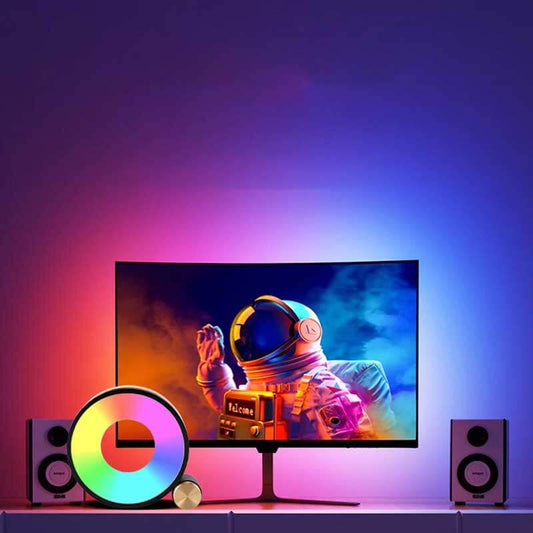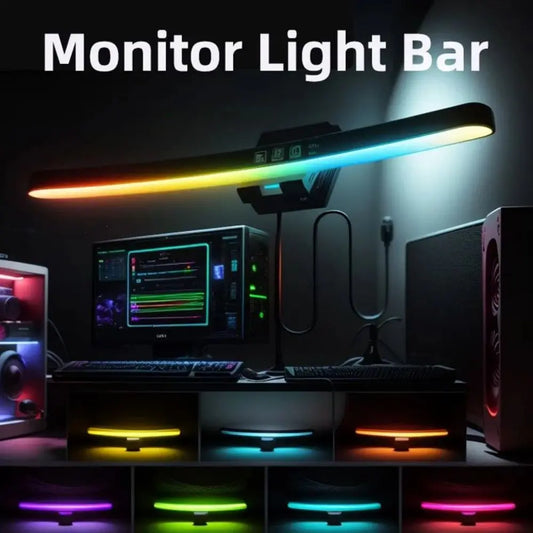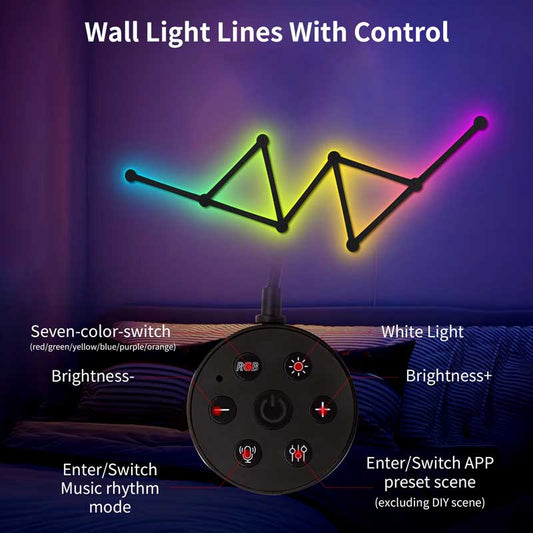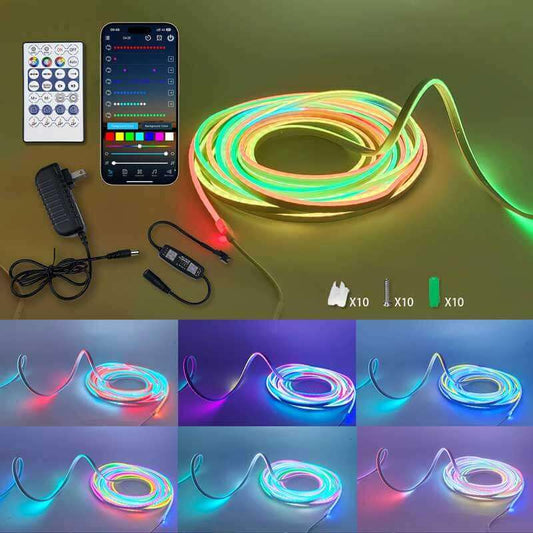What to do if LED strip lights won't stick?
Share
If your LED strip lights won't stick, there are several things you can try to resolve the issue. Here's a step-by-step guide on what to do if the adhesive on your LED strip is not holding properly:
1. Clean the Surface
The most common reason for LED strips not sticking is dirt, dust, or oils on the surface where you're trying to mount them. Cleaning the area properly ensures better adhesion.
-
What to do:
- Clean the surface with a mild cleaning solution (like soap and water) or isopropyl alcohol (70% or higher) to remove dust, grease, and other contaminants.
- Use a clean, lint-free cloth or paper towel to wipe the area, and allow it to dry completely before applying the LED strip.
2. Use a Stronger Adhesive
If the adhesive on your LED strip is not strong enough or has lost its stickiness over time, you can apply additional adhesive to ensure it sticks properly.
-
What to do:
- Double-sided tape: Apply a strip of high-quality double-sided tape to the back of the LED strip for better adhesion.
- 3M VHB (Very High Bond) tape: This is a stronger, durable tape that works well on most surfaces and can hold heavy strips.
- Hot glue: If the strips are still not sticking, you can apply a small amount of hot glue to the back of the strip in a few places for extra hold. Be cautious not to use too much, as it can damage the strip or create difficulty when you need to remove it later.
- Super glue: Another option is super glue or construction adhesive, but this is typically more permanent and may damage the strip when removed.
3. Check the Temperature
Extreme temperatures, both too hot or too cold, can prevent the adhesive from sticking properly. Ensure that the environment is at an optimal temperature for the adhesive to bond effectively.
-
What to do:
- Room Temperature: Try installing the LED strips when the room temperature is between 60°F and 80°F (15°C and 27°C). Avoid installation in areas with direct heat or cold drafts.
- Reheat the adhesive: If the adhesive backing feels weak, you can gently heat it up with a hair dryer on a low setting for a few seconds to make it more tacky and help it bond better to the surface.
4. Apply Extra Pressure
If the strip isn’t sticking properly, it could be that the adhesive isn’t making enough contact with the surface. Applying even, consistent pressure can help the adhesive bond more effectively.
-
What to do:
- After sticking the LED strip to the surface, press down firmly along the length of the strip for several seconds to ensure better adhesion.
- You can use a soft cloth or a roller to evenly distribute pressure across the entire strip.
5. Use Mounting Clips or Brackets
If the adhesive still isn’t holding, you can use mounting clips or brackets designed specifically for LED strips to hold them in place.
-
What to do:
- Look for clip-on LED strip holders that can be mounted with screws or adhesive, depending on your preference.
- These are useful for longer strips or in areas where you need extra stability.
6. Check the Quality of the LED Strip's Adhesive
Not all LED strips come with high-quality adhesive. If you have cheap LED strips, their adhesive backing might not be as effective, leading to the strip not sticking properly.
-
What to do:
- If the adhesive is of low quality, replace it with a stronger adhesive or reapply new tape (like the 3M VHB mentioned earlier).
- Consider purchasing a higher-quality LED strip with better adhesive backing if you find this to be a recurring problem.
7. Consider Using Alternative Mounting Methods
If the surface you're trying to mount the LED strips to isn't conducive to adhesion (e.g., textured walls or surfaces with a lot of grooves), consider alternative mounting methods.
-
What to do:
- Track or channel mounts: You can use aluminum channels or plastic tracks to mount your LED strips. These not only protect the strips but also provide a secure mount on surfaces that don’t adhere well to tape.
- Screws: For more permanent installation, consider using small screws to hold the strips in place. This is especially useful if you're installing the strips on a ceiling or in an area that will experience vibration or movement.
8. Reposition the Strip
If the strip is still not sticking well in some areas, you can try to remove and reposition it while it's still sticky.
-
What to do:
- Reapply the strip: Carefully peel the strip off the surface (without damaging the adhesive) and try again on a different spot or re-press it down more firmly.
- Use a small amount of tape to help secure the ends if the adhesive backing is starting to lose its stickiness.
9. Surface Type Considerations
Some surfaces are more difficult for adhesive to bond to, especially rough, porous, or glossy surfaces.
-
What to do:
- If you're sticking the LED strip on surfaces like brick, stucco, or painted metal, you may need to use a stronger adhesive or mounting clips.
- Avoid extremely smooth or shiny surfaces (e.g., glass, polished plastic) unless the adhesive is rated for them, as it may not hold as well. In such cases, consider using mounting brackets or screw-in fixtures.
Conclusion
If your LED strip lights won’t stick, the solution could be as simple as cleaning the surface, using a stronger adhesive, or applying extra pressure. For stubborn cases, you can use mounting clips or brackets as an alternative. If you follow these tips, your LED strip lights should stay securely in place for long-lasting, effective lighting!




